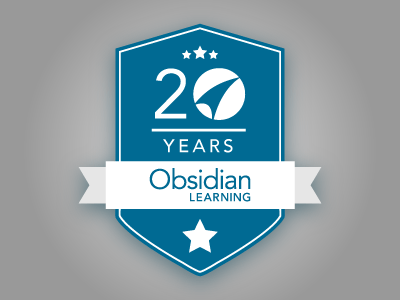Though times are uncertain, it seems likely that organizations will be seeking to rehire former employees as the economic climate stabilizes. Reboarding—bringing former employees back up to speed—is different from onboarding and should be designed as such.
The COVID-19 pandemic has stretched out longer than many of us could have imagined back when we heard the first reports of this disease. At its onset, and in industries where it was a viable solution, many businesses shifted to remote work as a temporary measure to slow the spread of the virus while still maintaining productivity. But as the pandemic continued with no clear end in sight, businesses faced tough decisions about resource allocation and personnel. Whether compelled to implement temporary furloughs or outright layoffs, just about every business sector has been affected to some degree.
While we’re still waiting to see what the new normal might entail, it would be wise to start thinking about what will happen once the dust settles. It seems a fairly sure bet that many industries will be seeking to rehire furloughed employees. Why start from scratch when you’ve got experienced hands waiting in the wings? Reboarding, however, can be a delicate dance. Let’s take a look at why that might be the case.
Consideration #1: Reboarding Is Not Onboarding
When onboarding, you’re dealing with individuals who are new to the organization, its culture, administrative quirks, and best practices. When reboarding, the exact opposite is true. How are you going to handle this distinction?
If you have a robust onboarding program in place, you’re already ahead of the curve. Sift though the typical onboarding program and determine what will be appropriate for your reboarding hires. They surely don’t need to sit through the entire program, and if you insist that they do so, be prepared for resistance—it’s a tough exercise to sit through training that you don’t want or need. And as an employer, do you really want to get off on the wrong foot with rehires?
Be thoughtful about change management. Identify new workplace practices, notably those related to health and safety, and ensure those are included in the reboarding program. You’ll avoid boring your rehires to tears, while demonstrating your concern about the continued wellbeing of all employees.
Be sure to leverage the experience of past and present managers and supervisors, not just HR. Their broader perspective will help enrich the reboarding process. Rather than having rehires jump through some administrative hoops and calling it a day, this is an opportunity to reconnect in a meaningful way with your employees.
Consideration #2: Rehires Need a Roadmap
Clarity is key for returning employees. Let them know straight out of the gate what the reboarding process will look like. Outline the steps they need to take, what portion of the onboarding training is required, and what assessments will be necessary. Especially in a time of widespread uncertainty, setting clear expectations will be highly appreciated.
Address career development from the outset. Are employees being reassigned to the same role? Are they back on their previous development path? What can they expect in terms of career progression? These are burning questions for rehires, so make sure to provide the answers from the outset. And if you honestly don’t know, or need additional time to nail down a new organizational structure, tell them that. Businesses are suffering from uncertainty as much as individuals, and your honesty will go a long way towards rebuilding trust.
Consideration #3: Returning Employees Have Specific Needs
Speaking of uncertainty, operate on the assumption that returning employees will require some reassurance. Bring them up to speed on organizational changes that might have occurred while they were away; you can’t assume they know or will discover everything they need to properly perform and excel at their jobs.
Equally, you’ll need to undertake a respectful look at potential performance gaps. How long has the employee been away? Has it been long enough that some key job functions have changed? If so, they might need to unlearn some old habits and acquire new ones. Provide performance support to address any gaps as swiftly as possible.
Consideration #4: Leverage the Experience of Rehires
If you’ve recalled employees and are also hiring new ones, here’s an opportunity to leverage the professional experience of the former while enhancing the onboarding experience of the latter. You’ve got a pool of individuals who know how the organization functions, but might be feeling a bit out of sorts after a period of unemployment. Demonstrate your confidence in their competence and institutional knowledge by asking them to volunteer as mentors to the new hires.
The newbies will benefit from having a specific person to ask the questions they might hesitate to ask otherwise, and rehires can brush up on their own skills by helping the new employees through the onboarding process. A note of caution here: make sure the mentor has a positive outlook. A returning employee resentful of having previously been let go can seriously put a damper on the enthusiasm and potential of a bright-faced new employee.
Consideration #5: Returning Employees Deserve Honesty
This is critical. Beyond the financial implications, it’s never easy to be laid off; there are always lingering questions about personal competence and value as compared to other employees, especially those who weren’t let go. How do you make employees feel valued and appreciated under such circumstances?
This is perhaps less difficult considering where we are today; a world-wide pandemic that has rocked the global economy is a pretty convincing rationale. But as employees return, reinforce how and why their presence is important to the organization’s success. And if the state of the organization, industry, etc., remains precarious, let them know that, too. Explain the strategy for building back the business; better yet, involve them in that strategy. You never know what creative solutions might be lurking in the minds of your employees; making them feel a necessary part of your team might tap unanticipated potential and insights.
Conclusion
Rehires are a special breed, and should be treated as such. They have skills, experience, and organizational knowledge that will get them back up to speed much more quickly than a new employee. Keeping these 5 tips in mind will equip you to navigate the reboarding process for the mutual benefit of your returning employees and the organization as a whole.







